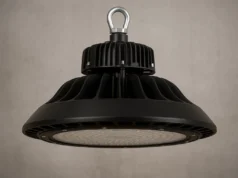Step into any medical facility today and you’ll see the same hushed concern: How do we keep pace with increasing drug prices? It’s not merely a matter of high-priced specialty drugs. Even the essentials—antibiotics, blood pressure medication, painkillers—can seem to be moving out of reach. The leaders must engage in a never-ending tug-of-war: offer the finest care possible within budgets that appear to contract with each quarter.
Where do you seek relief? Curiously, not necessarily in renegotiating with drug companies or taking shortcuts. Increasingly, more facilities are turning to Pharmacy Group Purchasing Organizations (GPOs) as their means through the storm.
The Pressure Cooker of Drug Pricing
Let’s get real: drug pricing is ruthless. Between a shortage of supplies, regulatory challenges, insurance scheme complexity, and volatile surges in demand, it seems like a game in which the playing rules are changed halfway through. A facility can plan for one price, then watch it change overnight.
The challenge isn’t monetary—it’s psychological. Administrators are concerned with sustainability, and pharmacists feel the pinch of delivering affordable yet effective answers to patients. Nobody wants to be the one to have to explain that a particular medication can no longer be had or is now more costly.
That’s the pressure cooker most hospitals exist in on a daily basis. Which is why the role of pharmacy GPOs is so crucial.
What a Pharmacy GPO Really Does
It’s simple to think of a GPO as a large buying club. Buildings combine their purchasing demand, and in turn, they receive quantity discounts. That’s correct, but it’s merely the tip of the iceberg.
Pharmacy GPOs provide purchasing power—something one facility could never get. They negotiate solid prices through contracting with manufacturers, distributors, and wholesalers. But that’s not all; they provide consistency, intelligence, and an insurance policy against unexpected shocks.
Think of it this way: you could walk into a store and haggle for one medicine bottle. Or you could walk in representing a thousand buyers at once. Whose voice carries further?
Shielding Against Volatility
The elegance of GPOs is that they can mitigate the shock of market fluctuations. If shortages drive prices higher, GPO contracts tend to maintain pricing. When demand spikes, the GPO has several supplier relationships to fall back on, so facilities are not left scrambling.
And in Healthcare GPO, predictability is priceless. It allows leaders to plan budgets with confidence instead of guessing. It reassures staff that patients won’t face delays due to stock-outs. It also helps keep the focus where it belongs: on care, not on chasing down medications.
More Than Just Discounts
Of course, everyone loves savings. However, the real hidden value of pharmacy GPOs lies in the efficiencies they create.
Centralized purchasing equals fewer headaches from vendors and less bureaucracy. Facilities don’t have to balance hundreds of contracts or spend time searching out the best prices—it’s all built into the GPO relationship.
Even more compelling? The information. Some pharmacy GPOs offer advanced reporting that shows spending patterns, makes recommendations for alternatives, and spots areas of waste. That’s information most facilities would never discover independently.
The Human Side of Cost Pressures
Let’s stop for a moment there. When discussing “pricing pressures,” we can picture it as a chilly fiscal matter. But anybody who has worked in a facility understands it’s extremely human.
It’s the pharmacist who feels defeated when a patient can’t afford a life-saving medication. The administrator wakes up in the middle of the night worrying about how far the budget will hold out. It’s the nurse who observes the ripple effect when a drug is not accessible.
Pharmacy GPOs, in their unobtrusive manner, alleviate some of that pressure. They don’t merely secure lower prices—they provide stability and confidence. That is worth more than spreadsheets can ever say.
A Story of Relief
Suppose a mid-sized nursing home. For months, their pharmacy charges rise higher, devouring funds for staffing and resident activities. Administrators are stuck: either skimp or operate at a loss.
Then they sign on with a pharmacy GPO. Overnight, they have access to negotiated contracts for common generics and high-demand brand drugs. Prices settle. Reporting tools show that some medications had lower-cost versions available, which their staff hadn’t known. Within a year, the facility saves funds and regains time spent balancing vendors.
The patients? They see continuity—medications are on hand, orders are not backed up, and care is uninterrupted. It’s not merely cost savings. It’s assurance.
Why the Timing Matters
Healthcare is more stressed than ever before. Inflation, labor shortages, and supply chain disruption have all converged, and pharmacies are stuck in the middle. Delaying to “get around to it later” isn’t a choice anymore.
That is why pharmacy GPOs are catching on so fast. They’re not merely an economic tactic—they’re a survival mechanism. Hospitals that get on board early are in a stronger position to ride out future interruptions. Those who hesitate tend to be scrambling when the next shortage or price surge comes along.
Thinking Beyond the Dollar
That’s the change to watch: the function of a pharmacy GPO is no longer simply reducing expense. It’s about control—control of budgets, control of supply chains, control of the ever-present uncertainty that characterizes healthcare today.
When so much in the world seems outside one’s control, that level of control is enabling. It enables facilities to move back to what really matters: the delivery of care, trust with patients, and giving teams the tools they need to perform at their best.
Closing Thoughts
Pricing pressures aren’t disappearing anytime soon. If anything, they’re just growing stronger. But facilities don’t need to tackle them in isolation.
Pharmacy GPOs provide more than savings — Prime Source Expense Experts provide stability, transparency, and negotiating power in a wild market. They change how facilities deal with medications, making what used to be a losing fight an eminently manageable, even strategic, endeavor.
Therefore, the next time you notice your coworker complaining about increasing drug prices, ask them this: What if you didn’t have to fight this battle alone?
Because the reality is, you don’t.








